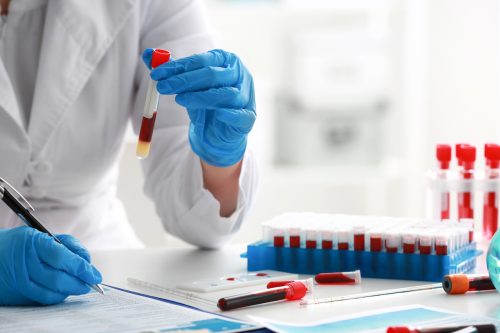11 Symptoms of a “Serious Bacterial Infection” Like Madonna Has
The superstar delayed her tour.

Fans were shocked last week by the news that Madonna spent several days in intensive care because of a “severe bacterial infection,” as announced by her manager. Not only was it surprising that one of the world’s biggest music stars managed an ICU visit in near total secrecy for days, but the reason for the medical crisis has caused curiosity and concern. It’s unclear what kind of bacterial infection Madonna suffered that became so severe—more details haven’t been officially announced. But on the Today show, NBC medical correspondent Dr. Natalie Azar speculated that sepsis might have been the reason for Madonna’s ICU admission. Read on to hear 11 symptoms.

Sepsis, also known as septicemia, is the official name for blood poisoning by bacteria. “Typically, admission to the ICU would happen if the doctors are concerned that somebody either is perhaps becoming septic or may have sepsis, which is a potentially life-threatening emergency that can happen when your immune response overreacts to an infection,” said Azar. Sepsis can proceed to a condition called septic shock, which has a death rate of 50%, according to Johns Hopkins Medicine. According to a November 2022 study, 13.6% of all global deaths in 2019 were due to bacterial infections—about 1 in 7.

Bacterial infections can be caused by harmful bacteria from a person, animal, an infected substance, or another aspect of your environment, or they can be caused by good bacteria invading a place in your body where it shouldn’t be, the Cleveland Clinic says. Sepsis can also result from lung infections such as pneumonia, urinary tract infections, skin infections, or infections in the intestines or gut, according to John Hopkins Medicine. So how do you know if you might be developing sepsis? The symptoms vary depending on the condition, but these are what experts say are the most common.

“Sepsis develops very quickly,” says Johns Hopkins. “The person rapidly becomes very ill.”

Bruising is a common sign of sepsis. “People with sepsis often develop a hemorrhagic rash—a cluster of tiny blood spots that look like pinpricks in the skin,” says Johns Hopkins Medicine. “If untreated, these gradually get bigger and begin to look like fresh bruises.” The bruises ultimately conjoin to form larger purple areas.

Fever is often a telltale sign of illness or infection, and it is one of the most common signs of sepsis, Johns Hopkins Medicine says. According to TMZ, Madonna “battled a low-grade fever for a month” before her illness worsened and she collapsed. “Madonna mostly ignored her symptoms and never got checked out by a doctor because she was laser focused on rehearsing for her upcoming tour,” the news outlet reported. “Her doctors believe the unreported fever was a sign of the infection, which worsened because it was left untreated.”

A person with sepsis may also:
– Have a high heart rate
– Lose interest in food and surroundings
– Become nauseated or vomit
– Become sensitive to light
– Complain of pain or discomfort
– Feel cold, with cool hands and feet
– Become lethargic, anxious, confused, or agitated
– Fall into a coma

Anyone can develop sepsis, but people in certain groups are at greater risk. They include people with chronic medical conditions (such as diabetes, cancer, lung disease, immune system disorders, and kidney disease); people with weakened immune systems; people with community-acquired pneumonia; and people who’ve been previously hospitalized (particularly for an infection).














